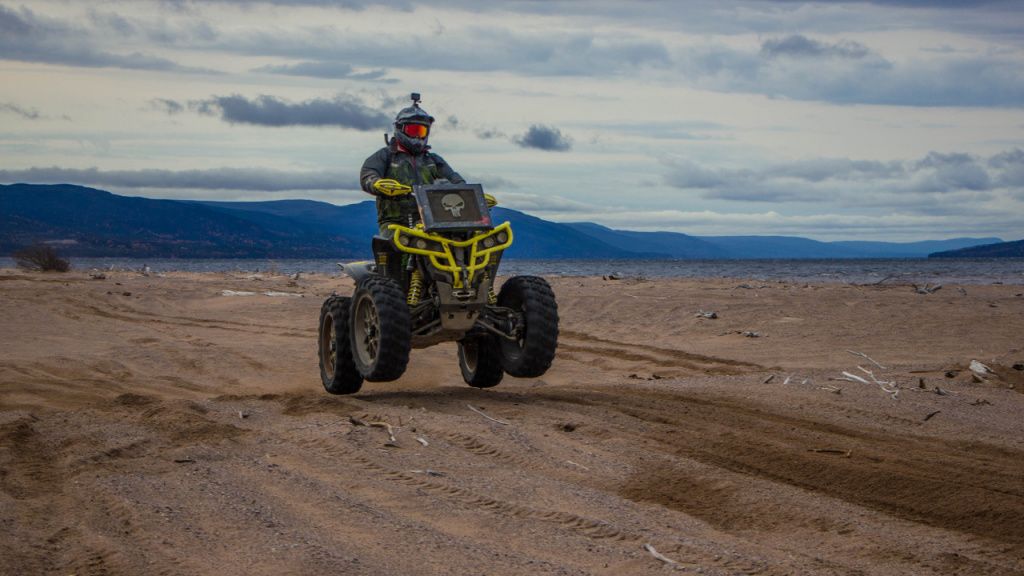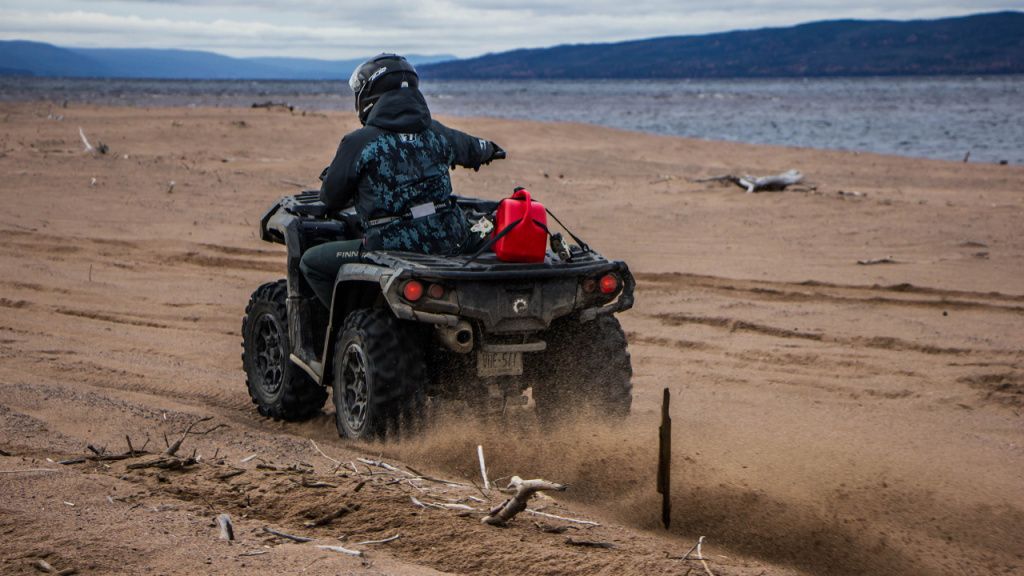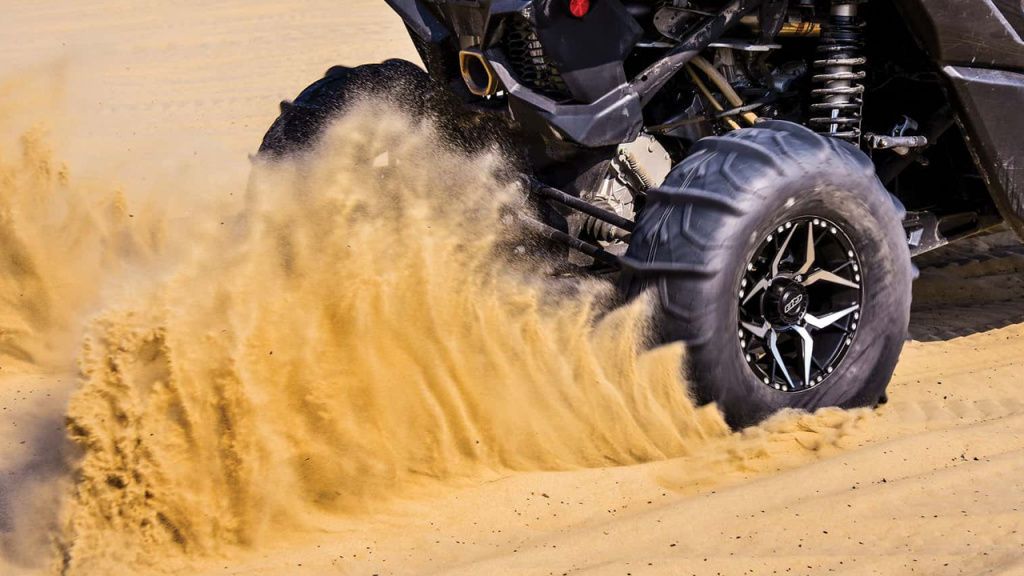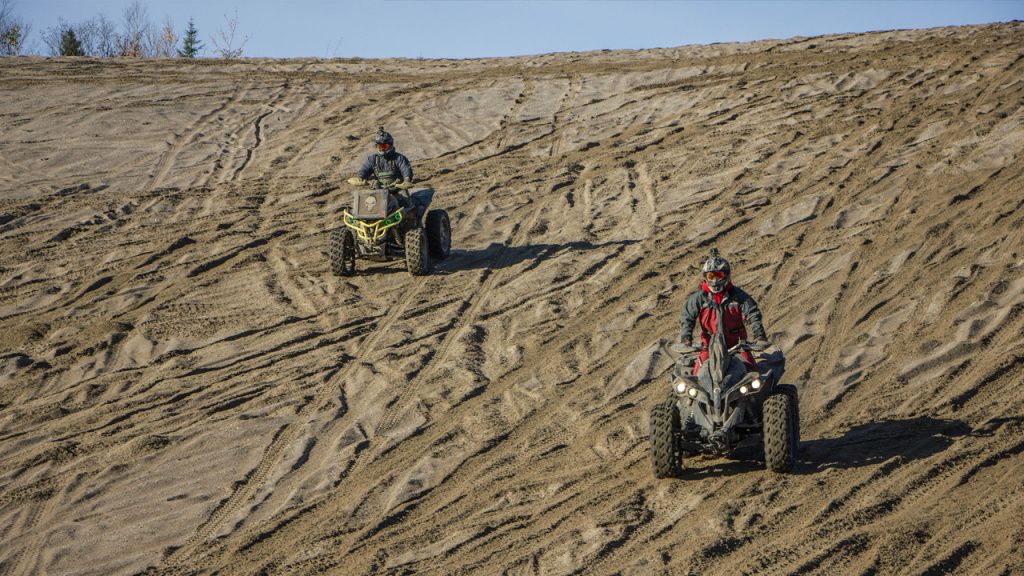How to Ride your ATV / UTV in Sand
Riding in the sand is one of the most amazing ATV or UTV adventures you can have. But you can't just hit the dunes, you need specialized skills and some machine preparation to make sure it is the positive experience it should be.
How to Prepare Your ATV / UTV for Riding in the Sand

Your machine needs sand proofing. Riding in the sand requires more spinning of the tires, which will put more strain on your engine. You'll also need to keep sand out of your engine to prevent damage.
Decrease the weight of your machine
Lighter machines float rather than sink into the sand so they can get better traction.
Reduce the weight of your machine by:
- switching to lighter weight or paddle tires.
- optimizing storage to carry necessary items with the smallest amount of weight.
- replacing the skid plate with a lighter weight one.
Put fresh oil in your ATV engine
Riding in sand puts extra work on your engine, so you'll want to make sure you're working with optimal oil flow.
It is wise to change the oil and the oil filter before tackling sand.
Clean and oil your air filter
Your air filter is about to be put to its most difficult test: sand. Make sure it is prepared to protect your engine by cleaning and oiling it. Flange type air filters need extra oil around the flange for best protection. If you have any doubt about the filter's integrity, you could change it too.
Grease your machine properly
Your machine always needs routine greasing, but it's particularly important before hitting the dunes. Regrease everything you normally grease and pay special attention to the axle carrier, swing arm pivot, and suspension linkages.
While you're doing this step is an excellent time to examine other little details of your machine that may need attention like loose bolts and pins,
The Proper Tire Pressure for Riding Your ATV / UTV in the Sand

Tire pressure plays a big part in your traction.
You want lower tire pressure for sand than for normal riding so the tire can lay flatter against the surface and have more area to grip with. 3-4 psi is perfect for stock ATV tires on an ATV with average weight. Heavier ATVs need more tire pressure. The average UTV needs 8 psi. If you have 14 inch tires on your UTV, you may need 10 psi. As you might can tell, the exact perfect number for you depends on the machine's weight and the tires you have.
All About Paddle Tires

Paddle tires are specifically designed to increase grip in terrain where it is difficult to get grip, like sand and mud. The name comes from the paddle-like additions on the surface of the tire that dig into the terrain. Different paddle tires work best for different kinds of riding, so you'll want to know which ones to buy.
V-cup paddle tires work best for general sand riding, just easy-going, enjoying the sand. Straight-cup paddle tires are needed for racing and serious hill climbing in the sand.
There is more to consider when purchasing paddle tires. They come in different diameters, and this impacts gearing and rider comfort. The paddles come in different sizes, and you'll need larger ones to go with more horsepower.
The number of paddles on a tire matters. Your average ATV or UTV needs 6-8 paddles. An ATV or UTV with a larger than normal motor needs 10 paddles. Racing machines need 12 to 14 paddles.
Do you need paddle tires?
That depends. For general sand riding, you'll probably be fine with any lightweight or stock tire with reduced tire pressure. If you intend to race or do serious hill climbing or you only have heavy tires, you need paddle tires.
If you buy paddle tires, you don't have to replace all of your tires. The ideal setup most of the time is stock tires in the front and paddle tires in the back.
Sand Riding Tips and Techniques

Safety gear
You always need safety gear when riding an ATV. Sand riding is no exception. You may want to buy sand goggles to protect your eyes from the effects of looking at so much bright sand and to keep sand from getting inside your goggles. Safety flags are a helpful addition to increase the visibility of each member of your riding group.
Moves
Keep momentum strong.
Riding in the sand is all about momentum. It's what keeps you moving and not getting bogged down or stuck. You'll need more momentum to tackle bigger hills. When you first start sand riding, make sure to practice and build your skills in this area.
Control your speed.
You need a little speed to get and keep your momentum, but that doesn't mean you need to be a speed demon. You can go too fast and lose control. Aim for just what gets you the momentum you need, and no more.
Jumping.
Sand dunes provide plenty of opportunity for jumping. To jump safely, be mindful that hills change quickly. The one you enjoyed yesterday may not be safe today. Always appoint a spotter to watch for other riders on the other side of the hill and to make sure that you had a safe landing.
Side sliding.
To side slide on a steep slope, let your (machine's) rear end drop lower than the front. Use momentum, throttle, and balance to navigate the side of the hill.
Climbing.
Before you climb a hill, you need to plan your climb and have your transition spot in mind beforehand. If not, you could hit an unfavorable spot, lose your momentum, and get stuck.
Turning around.
The only unique thing you need to know about turning around is that you need to use momentum to do it, so if you feel you're losing momentum, turn around at the first sign to keep from getting stuck.
Transitioning.
When transitioning on a dune, you need to hit the peak at around a 45-degree angle to reduce the jolt when your front end hits ground again.
Dismount.
Part of off-roading is knowing when to get off the machine if things go south. Not literally. If you're losing control of your machine and it may tip over, jump off. It's safest to jump toward higher ground.
When you get back on your ATV or UTV, which you will be more likely to be able to do if you played it safe, turn the front tires facing downhill so you can regain momentum.








































